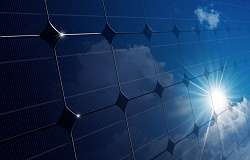
Breaking News
 China Will Close the Semiconductor Gap After EUV Lithography Breakthrough
China Will Close the Semiconductor Gap After EUV Lithography Breakthrough
 The Five Big Lies of Vaccinology
The Five Big Lies of Vaccinology
 Large global study analyzing data from 192 countries has sparked intense debate by suggesting...
Large global study analyzing data from 192 countries has sparked intense debate by suggesting...
Top Tech News
 EngineAI T800: Born to Disrupt! #EngineAI #robotics #newtechnology #newproduct
EngineAI T800: Born to Disrupt! #EngineAI #robotics #newtechnology #newproduct
 This Silicon Anode Breakthrough Could Mark A Turning Point For EV Batteries [Update]
This Silicon Anode Breakthrough Could Mark A Turning Point For EV Batteries [Update]
 Travel gadget promises to dry and iron your clothes – totally hands-free
Travel gadget promises to dry and iron your clothes – totally hands-free
 Perfect Aircrete, Kitchen Ingredients.
Perfect Aircrete, Kitchen Ingredients.
 Futuristic pixel-raising display lets you feel what's onscreen
Futuristic pixel-raising display lets you feel what's onscreen
 Cutting-Edge Facility Generates Pure Water and Hydrogen Fuel from Seawater for Mere Pennies
Cutting-Edge Facility Generates Pure Water and Hydrogen Fuel from Seawater for Mere Pennies
 This tiny dev board is packed with features for ambitious makers
This tiny dev board is packed with features for ambitious makers
 Scientists Discover Gel to Regrow Tooth Enamel
Scientists Discover Gel to Regrow Tooth Enamel
 Vitamin C and Dandelion Root Killing Cancer Cells -- as Former CDC Director Calls for COVID-19...
Vitamin C and Dandelion Root Killing Cancer Cells -- as Former CDC Director Calls for COVID-19...
 Galactic Brain: US firm plans space-based data centers, power grid to challenge China
Galactic Brain: US firm plans space-based data centers, power grid to challenge China
New process for manufacturing PV cells means cheaper solar power

This is because the cost, inefficiency and negative environmental impact that the manufacturing of these cells outweighs any potential savings provided by the resulting solar energy. If, however, cost could be were minimised, then solar power would be more able to compete with traditional fossil fuel-based methods for generating energy.
To overcome this hurdle, the EU-funded SOLNOWAT project has developed an innovative dry process for manufacturing PV solar cells.
Going dry
PV cells are typically created via a wet chemical process that etches away layers of silicon from a crystalline wafer, leaving behind the solar cell. The SOLNOWAT process replaces the expensive and inefficient wet chemical process with the use of atmospheric pressure dry etching technology – a process that cuts costs and speeds up production. Because less silicon is removed during dry etching, the resulting cells are darker, making them very efficient at absorbing light. In fact, they are so efficient that they have been classified as having zero global warming potential.

 This is why RAM costs so much
This is why RAM costs so much

